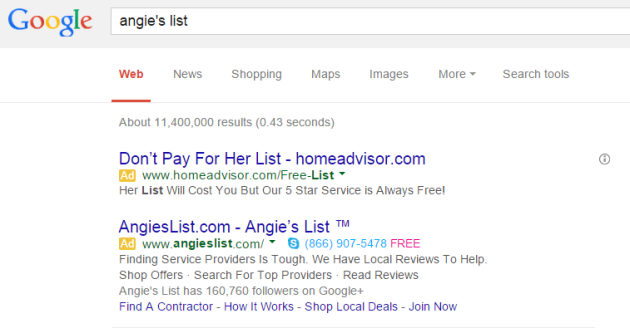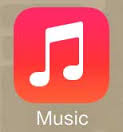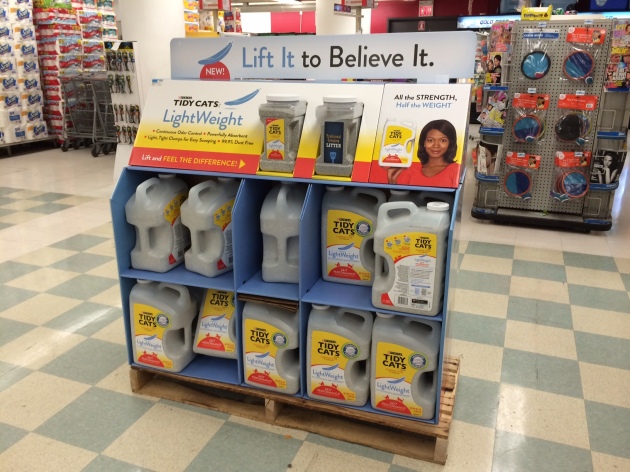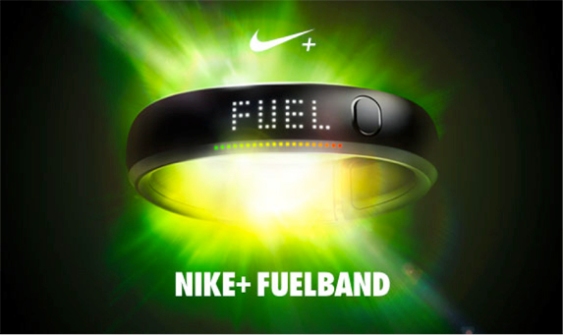There are some things I can’t wrap my head around. Why we are still making Left Shark jokes, (…He is a free spirit, so don’t hate…). Why iPhone spell check changes “On my way home” to “Ottawa homer” (I’ve never even been to Ottawa! …and who the heck is Homer??). Why we got only 73 seconds of Eddie Murphy during the 40 year SNL celebration (talk about a quickie…).
Another, most befuddling of all, (and the topic of this post), is why anyone would pay for something you can get elsewhere for free?
There are businesses out there that exist doing just that – offering stuff that you can get for free elsewhere. It defies all logic and common sense.
Want examples? I’ve got examples; three to be exact.
Example 1. Take the subscription-based job search site, The Ladders.
Cute name, and they may have even beat LinkedIn to the $100K+ job search market niche back in 2003, but – boy, has the web changed the art of the job search since then.
Any job seeker with half a brain and a half-assed job hunt can find that the pay job listings can be found elsewhere – for free, people, for free. You’ve got to be a goat munching happily on a hay bale of hemp straw not to realize you can find those same job posts from The Ladders (or IvyExec, or iHire, for that matter), but for free on Indeed, LinkedIn, or Ziprecruiter. You can even find The Ladders job postings for free directly on a company’s site with a simple Google search, (…I still ❤ you, Google).
LinkedIn, arguably the only professional social networking site, is getting better and better with job search functionality. And with nearly 350 million users, the (mostly) free site is the place for job searchers and recruiters, whether actively searching or not. Check out these stats:
| Company | Values | |
|---|---|---|
Annual revenue of LinkedIn |
$2,219m | Details → |
LinkedIn’s net revenue |
$643m | Details → |
Number of LinkedIn members |
347m | Details → |
Unique visiting members to LinkedIn (per quarter) |
93m | Details → |
LinkedIn’s two-click job application kicks The Ladder out from underneath, and while LinkedIn’s people search function needs help (try searching for Juan Perez and you’re just a likely to see Juan Valdez pop up first….one rides a donkey over mountains carrying sacks of coffee and the other is an QA Manager at Starbucks in Miami – slight difference).
Juan Valdez, his donkey, and some coffee
Juan Perez on LinkedIn, May I try the new Flat White Please?
Still, LinkedIn is heads and (donkey) tails ahead (OK, maybe I just wanted to say the word ‘donkey’ again…), of The Ladders in terms of sophistication and functionality for networking and job searching.
Further, apps are nipping at the heals of this market as well, and while I tried Switch (like Tinder but for job hunting) and Poacht (covert job search for the currently employed), I found them underwhelming.
Point being, technology and our smartphone-connected lives open up new possibilities for the insta-job hunt. Meanwhile, subscription-based models with their “saved searches” get left behind for ad-based models with social, algorithm-based matching.
1st Takeaway: Find out what new opportunities technology and our smartphone-connected lives open up for your business and find the insta-solution to make your customers lives more awesome (…before someone else does).
Want another example?
OK, sit tight as I take you through one of my favorite head scratchers, Example 2. Angie’s List. Angie’s List offers reviews of home service professionals, plumbers, electricians and the like.
Now, last I checked, humans are generally social animals. You mean to tell me that the vast majority of people out there couldn’t ask their friends, families, neighbors, pet sitters, piano teachers… if they know a good electrician?!?!?!?
Not to mention, free online review services are out there at Yelp.com. Check out this search for electrical contractors, complete with great filtering capabilities:
And, Yelp’s reviews are free! Free, free, free. Still can’t beat free. Both the reviews on Angie’s List and Yelp are from strangers. So I ask you – why pay for them!?!Enter HomeAdvisor. You may have seen their (nearly identical to Angie’s List’s) TV ads recently. Part of IAC, they have the stones and the budget for a full on Angie-style attack.
Here’s HomeAdvisor’s PPC campaign, attacking poor, dear, old Angie’s paid-subscription model outright:
HomeAdvisor is going right after Angie’s weak core, not only bidding on her brand terms but creating compelling landing pages specifically designed to take poor Angie out. 2nd Takeaway: Be sure your business offers a sustainable, worthwhile value proposition or you’ll invite competition, who will kick the Angie’s List right out of you.Example 3. And this was a favorite of mine from 1999-2001 that became a relative fossil a mere decade later, for many of the same reasons as The Ladders and good ol’ Angie – and help me pronounce this one like a true New Yorker – Zagat.
Another review site, this one for restaurants in major cities, again on the dreaded subscription model. The wannabe user generated content style reviews quickly became the go-to resource for finding restaurants and bars, and then – just as quickly – lost because they became out of touch with what the marketplace and technology was offering. For Free.
It’s so sad I wrote my own Zagat-style review to commemorate it all:
Zagat InterContinental/American
Once “the restaurant review and food critic’s darling,” this “has been hot-spot guide” and its “dependably outdated” paid subscription model is as “good as dead.” Factor in its “why bother to innovate” service and “are-you-kidding me book for $15.99,” and you’ll understand the “early forced retirement” due to “more technologically advanced” competitors on the block.
3rd Takeaway: Today anyone with cash can throw 30 programmers against a consumer problem, copy you, and build a better mousetrap in less than nine months, so objective and comprehensive competitive audits are no longer optional.
So, Why Buy the Cow….
All three examples suffer from the innovate-or-die reality of today, the dreaded subscription (but no value) model, and competitors who have found that since the days of TV advertising are arguably dead, banner advertising can fuel their offering if they can just get enough monthly unique visitors. Build it and they will come. So long as the “it” is extremely useful, constantly evolving, and, of course, free.
But don’t cry over spilled milk, dear readers, there are green pastures ahead. To review, the 3 Takeaways:
1. Find new opportunities to make your consumers’ lives more awesome through technology, mindful of our smartphone-connected lives
2. Continuously offer a worthwhile value proposition to your customers
3. Validate #2 above with comprehensive and objective competitive audits.
You’ll see your glass (of milk) is half full, and worth paying for!



















